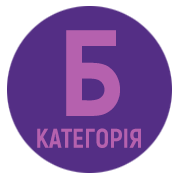LANGUAGE BUDDY: A COMPUTER-BASED PROGRAMMATIC TOOL FOR DEVELOPING THE SPEECH SPHERE IN PRESCHOOL CHILDREN WITH SPECIAL EDUCATIONAL NEEDS
DOI:
https://doi.org/10.32782/inclusion/2024.3.15Keywords:
movlyanka, computer tool, software and pedagogical tool, development of the language sphere, children with special educational needs, preschool age, utilization methodology, corrective workAbstract
In the publication, an analysis of the utilization of information and communication technologies (ICT) and the variability of their application in teaching children with special educational needs is presented. The focus is on the development of the language sphere in preschool-age children with specific educational needs such as developmental delay, autism spectrum disorders, severe speech disorders, and intellectual disabilities. The authors have developed a computer program called «Mobile and Computerized Pedagogical Tool ‘Movlyanka’» (hereinafter referred to as MPT ‘Movlyanka’) for children aged 4, 5, 6, and 7 years to enhance their speech abilities. The principles and methodology of using the computer program «Mobile and Computerized Pedagogical Tool ‘Movlyanka’» (MPT ‘Movlyanka’) are disclosed. The methodology includes justifying the requirements for implementing computers in the educational practice of preschool children with special educational needs and the directions for its use in the educational process in preschool educational institutions (kindergartens), inclusive resource centers, and educational-rehabilitation centers. It encompasses a description of modern software and pedagogical tools for language development in children aged 4–7 years and an investigation of their practical application. The publication provides recommendations and requirements for creating a software and pedagogical tool and highlights the use of computers for the development of the language sphere in preschool-age children (4, 5, 6, and 7 years old) with developmental delay (DD), autism spectrum disorders (ASD), severe speech disorders (SSD), and intellectual disabilities. The MPT ‘Movlyanka’ is presented as a practical example. The organization of corrective work for children within the computer game complex is described, and the advantages of the developed computer program MPT ‘Movlyanka’ are outlined. Each of the three parts of the MPT ‘Movlyanka’ consists of two sections: «Fairy Tale Conversations» and «Fairy Tale Workbook.» Each section covers specific topics.
References
Андріяш Л. «Веселий комп’ютер» шукає друзів. Дит. садок, 2010. № 28(556). С. 13.
Андрусич О. Комп’ютерна підтримка курсу «Сходинки до інформатики»: зроблено перший крок. Поч. школа, 2006. № 7. С. 41–43; № 8. С. 36–38.
Бондар В. І. Дидактика : ефективні технології навчання студентів Київ: Вересень, 1996. 129 с.
Державні санітарні правила і норми роботи з візуальними дисплейними терміналами електронно-обчислювальних машин ДСанПіН 3.3.2.007–98. Міністерство охорони здоров’я . Постанова, Правила. № 7 від 10.12.98
Діти з особливими освітніми потребами у загальноосвітньому просторі: навчально-методичний посібник / авт.: Н. Ярмола, Л. Коваль-Бардаш, Н. Компанець, Н. Квітка, А. Лапін. Київ: ІСПП імені Миколи Ярмаченка НАПН України, 2020. 208 c.
Дуброва Т. Вплив комп’ютерних ігор на особистість дитини Психолог, 2010. № 8. С. 26–30.
Селевко Г. К. Проектуємо комп’ютерний урок. Відкритий урок. 2006. №3. 4 (лют.) С. 19–25.
Орлов М. В., Сірополко І. М., Костін А. В. Моделювання інформаційних процесів у системах розумного міста. Вісник Національного технічного університету «Харківський політехнічний інститут». Серія: Нові рішення в сучасних технологіях. 2019. № 45(1). С. 90–95.
Полька Н. Комп’ютер: санітарні вимоги. Дошк. виховання, 1999. № 5. С. 8.
Смирнов В. А. Принципи конструювання комп’ютеризованого курсу. Комп’ютеризований курс «Введення в біологію. Ботаніка». Інформатика та освіта, 1994. № 2. С. 54.
Фіцула М. М. Педагогіка.Київ : Вид. центр «Академія», 2002. 528 с.
Nosenko Yu., Matyukh Zh. The Implementation of Multimedia Technology in Ukrainian Inclusive Pre-school Education. 13th Int. Conf. ICTERI : CEUR Workshop Proceedings. Kyiv, 2017. Pp. 459–466. URL: http://ceur-ws.org/Vol-1844/10000459.pdf







